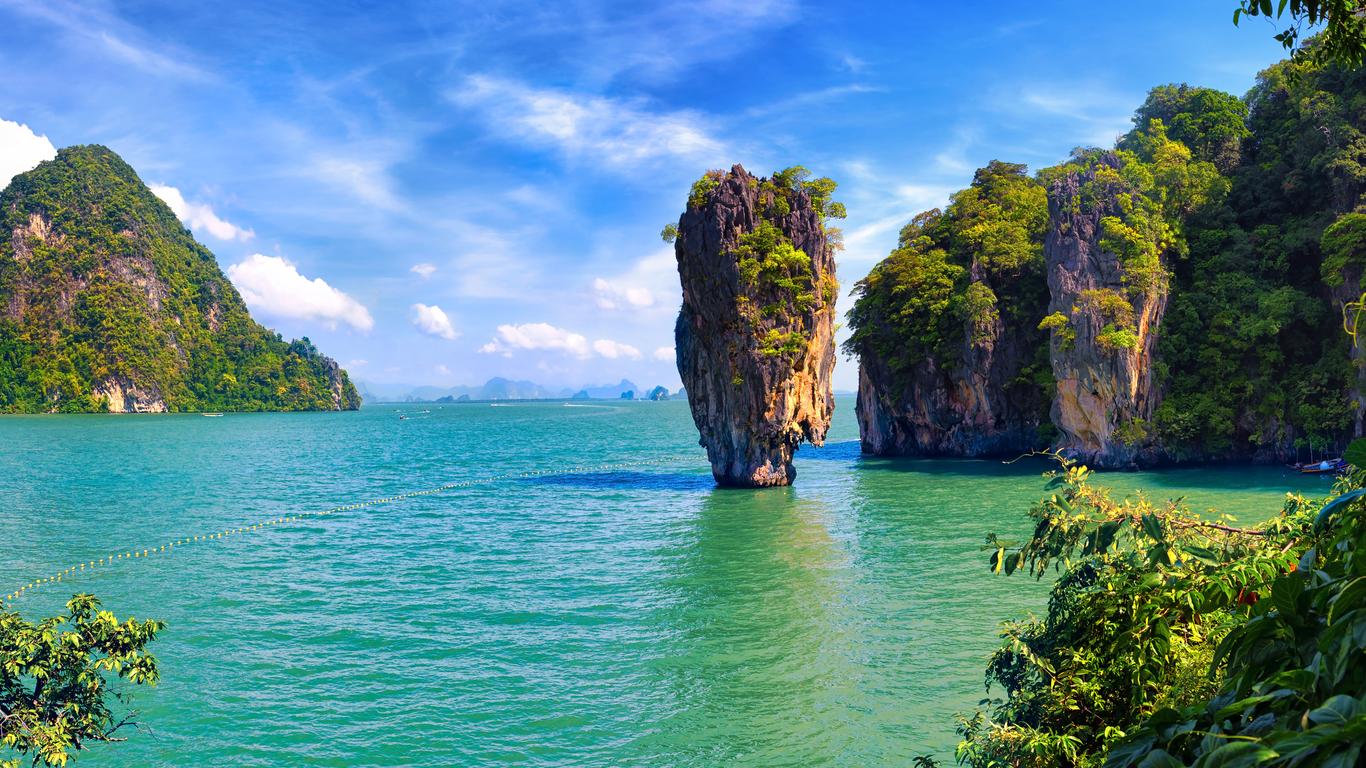With its spectacular limestone islets scattered across the Strait of Malacca between Phuket and the Malay Peninsula, Phang Nga is both a province and bay in southern Thailand. An extensive section is protected within the Phang Nga Bay Marine National Park which was declared a Ramsar Site of International Importance in 2002.
Of Phang Nga Bay’s many islands, the most famous is undoubtedly so-called James Bond Island, a needle-shaped limestone formation that appeared in the 1974 film "The Man with the Golden Gun". Most tours to this island, officially called Koh Tapu, include stops at the unique Muslim fishing village of Koh Panyee which has been built on stilts out over the water and is guarded by a giant monolith. The Ao Phang Nga National Park lies in the province’s southern end, with mangrove forests stretching out towards offshore islets and spectacular caves etched into the landscape below. The remote Similan Islands lie to the west of the mainland and boast some of Thailand’s premier dive sites which are best explored on multi-day liveaboards. While Ko Surin National Park lies further north, it is renowned for the picturesque island of Koh Tachai and gives visitors the opportunity to dive with manta rays and whale sharks at Richelieu Rock. For the best views across Phang Nga and its islets, head to the Samet Nangshe viewpoint which offers spectacular 180-degree panoramas, or get a dose of local culture at Wat Suwannakhuha whose caves are nestled into the surrounding mountains and adorned with Buddha images and royal monogram inscriptions.
Phuket International Airport is the closest to Phang Nga Province and long distance buses from Bangkok also service the region. Within Phang Nga itself, local songthaews are the most popular means of getting around, or visitors can rent a motorbike or scooter cheaply to explore at their leisure.
The region was first inhabited by settlers on the banks of the Phang Nga River in a district known as Kraphu Nga. During the early 19th century, Burmese troops invaded, causing many residents to flee, and it wasn’t until Siamese troops defeated them in 1824 that the area was renamed Phang Nga by King Rama II.





